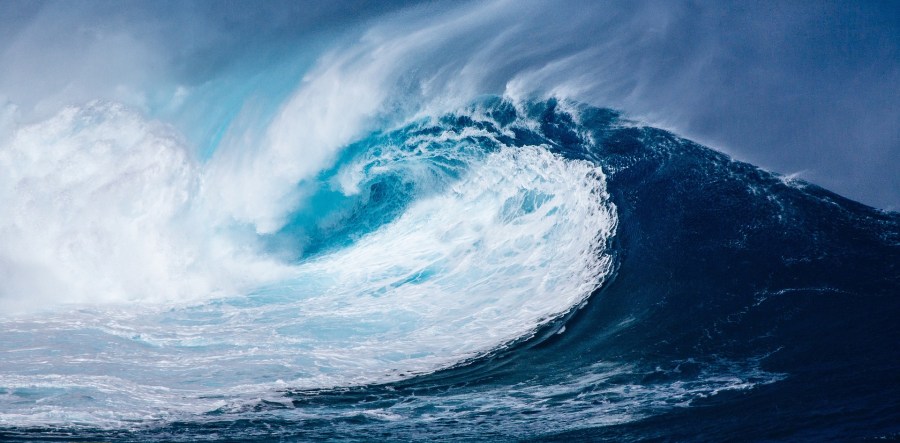What Are the Effects of a Tsunami?

If a tsunami reaches land the effects can include loss of human and animal life, devastating property damage, severe flooding, and disease. Environmental effects can include contamination of soil and water, permanent changes to the landscape, solid waste and disaster debris, and litter composed of hazardous materials and toxic substances.
A tsunami is a series of large waves created by an undersea earthquake, landslide, or volcanic eruption. When the position of the ocean floor shifts abruptly as a result of one of these events, water becomes displaced, causing the waves that can grow to become a tsunami. Tsunamis can move at up to 500 miles per hour, making them able to cross an ocean in less than a day.
When a tsunami hits land, the trough of the wave, or the area of the wave below the highest point often reaches land first. This causes the water level at the coast to recede suddenly before the tsunami hits. The waves often come in a series after the initial wave, a phenomenon called a wave train. Tsunamis do not always appear as a series of large waves, sometimes instead presenting as a sudden, forceful rising of water levels.
The severity of a tsunami’s effects depends on a number of factors, namely the magnitude of the earthquake, landslide or volcanic eruption, along with its distance from shore. Small and undetectable tsunamis occur almost every day with little to no effect, appearing as fast moving strong tides, but larger tsunamis have devastating effects to life and land that are often irreversible.
The central effect of large tsunamis is massive loss of human life. With no time to escape, tsunamis cause near instant death, usually by drowning, but also by collapsing buildings, electrocution and other causes. Since 1850, tsunamis have killed more than 430,000 people. The tsunami that struck Japan in March 2011 left a total of 18,550 people killed and/or missing.
The severe flooding that occurs as a result of a tsunami also damages sewer systems, water supplies, and soil. Stagnant and contaminated water leads to malaria and other diseases, causing illness, infection, and death to spread rapidly. Soil becomes salinized from sea water and debris, affecting long-term yields of crops.
The tall and fast-moving waves also damage property and permanently alter the landscape, sometimes wiping out entire islands. They destroy everything in their path, including buildings, trees, power lines, bridges, cars, boats and more, leaving behind them a mass of solid waste and debris that is almost impossible to clean up. They also destroy animal life, insects, plants, and natural resources. Hazardous materials and toxic substances are also a concern, as asbestos, oil, fuel, and other industrial raw materials and chemicals often leak as a result of property damage.
After a tsunami sweeps through an area, the communities that were affected often need both immediate and long term help. Rescue teams traverse the affected area searching for people who have become trapped in their homes or under debris, and the governments of other nations often provide aid in the form of funds and supplies. Reconstruction efforts are often lengthy and costly, as help is needed to rebuild infrastructure, clear rubble from collapsed structures, and demolish any buildings that are unsafe to enter. These clean up efforts can take years, and significantly hurt the economy of the affected area.





